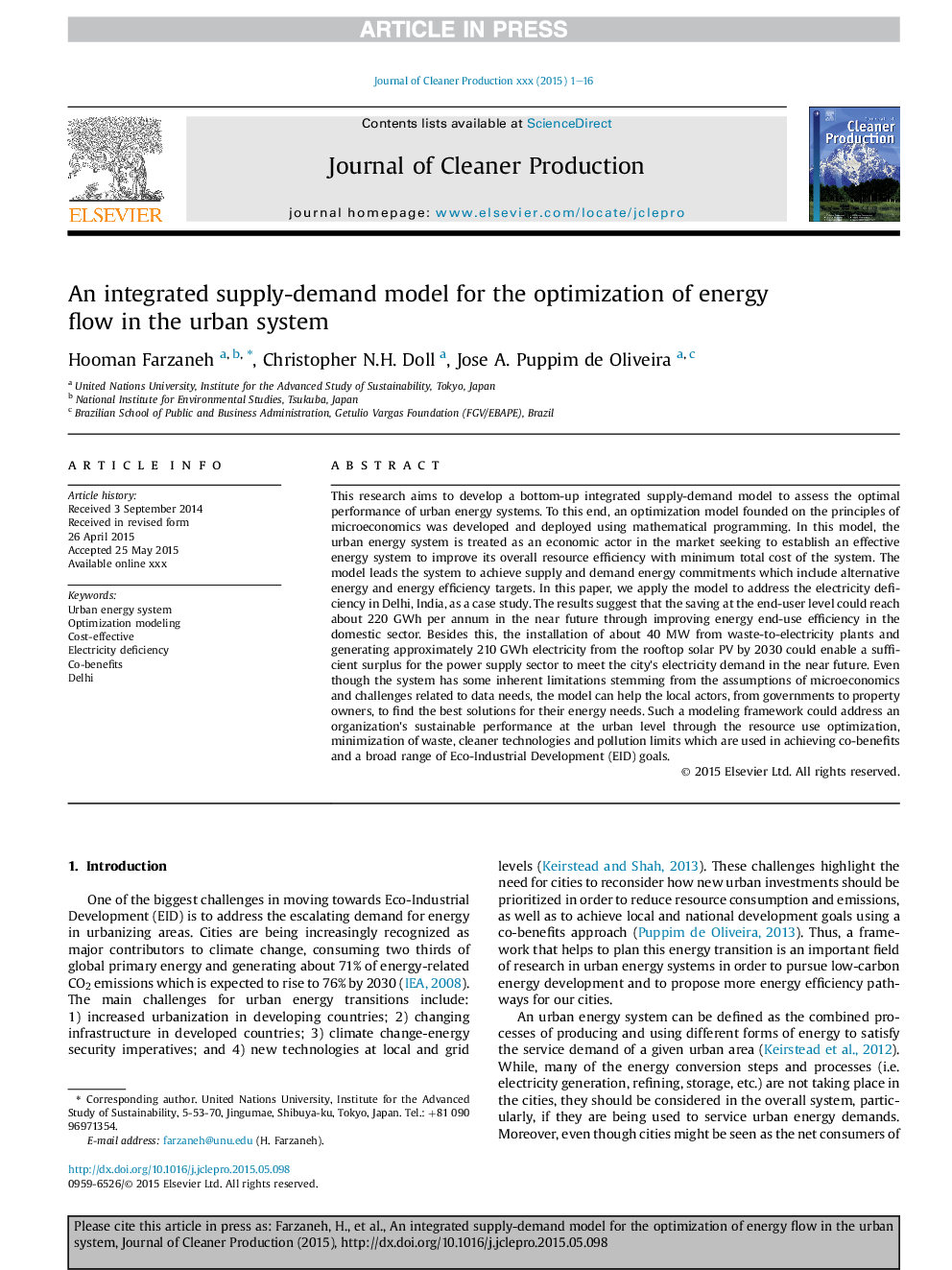| کد مقاله | کد نشریه | سال انتشار | مقاله انگلیسی | نسخه تمام متن |
|---|---|---|---|---|
| 8102737 | 1522135 | 2016 | 16 صفحه PDF | دانلود رایگان |
عنوان انگلیسی مقاله ISI
An integrated supply-demand model for the optimization of energy flow in the urban system
ترجمه فارسی عنوان
یک مدل تقاضای تقاضا برای بهینه سازی جریان انرژی در سیستم شهری
دانلود مقاله + سفارش ترجمه
دانلود مقاله ISI انگلیسی
رایگان برای ایرانیان
کلمات کلیدی
سیستم انرژی شهری، مدل سازی بهینه سازی مقرون به صرفه کمبود برق، مزایای همکاری، دهلی،
موضوعات مرتبط
مهندسی و علوم پایه
مهندسی انرژی
انرژی های تجدید پذیر، توسعه پایدار و محیط زیست
چکیده انگلیسی
This research aims to develop a bottom-up integrated supply-demand model to assess the optimal performance of urban energy systems. To this end, an optimization model founded on the principles of microeconomics was developed and deployed using mathematical programming. In this model, the urban energy system is treated as an economic actor in the market seeking to establish an effective energy system to improve its overall resource efficiency with minimum total cost of the system. The model leads the system to achieve supply and demand energy commitments which include alternative energy and energy efficiency targets. In this paper, we apply the model to address the electricity deficiency in Delhi, India, as a case study. The results suggest that the saving at the end-user level could reach about 220Â GWh per annum in the near future through improving energy end-use efficiency in the domestic sector. Besides this, the installation of about 40Â MW from waste-to-electricity plants and generating approximately 210Â GWh electricity from the rooftop solar PV by 2030 could enable a sufficient surplus for the power supply sector to meet the city's electricity demand in the near future. Even though the system has some inherent limitations stemming from the assumptions of microeconomics and challenges related to data needs, the model can help the local actors, from governments to property owners, to find the best solutions for their energy needs. Such a modeling framework could address an organization's sustainable performance at the urban level through the resource use optimization, minimization of waste, cleaner technologies and pollution limits which are used in achieving co-benefits and a broad range of Eco-Industrial Development (EID) goals.
ناشر
Database: Elsevier - ScienceDirect (ساینس دایرکت)
Journal: Journal of Cleaner Production - Volume 114, 15 February 2016, Pages 269-285
Journal: Journal of Cleaner Production - Volume 114, 15 February 2016, Pages 269-285
نویسندگان
Hooman Farzaneh, Christopher N.H. Doll, Jose A. Puppim de Oliveira,
